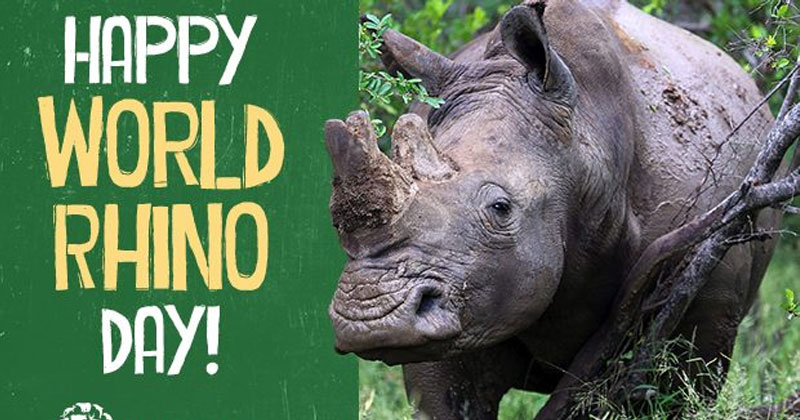Before you begin reading this any further, simply pay a thought to this rather alarming statistic: in the last 40 years, the world has lost over 95 per cent of its rhino population. Now just imagine a simple scenario.
Imagine you were sitting comfortably in your garden and an absolute pleasure of being serenaded by flowers and trees, without a care for the world; simply soaking up the joys of nature. Then suddenly, somebody comes in from behind, manhandles you, strangles you, grabs you by the collar, and starts to hit you. Finally, even without administering a dose of anaesthesia, simply chops off both thumbs from your hands and leaves you like that in an abysmal state of pain in permanence. What are you going to do? On the occasion of World Rhino Day 2018, let’s spare a thought for an absolutely majestic wild animal that might be feeling something like the above, perhaps in a state of utter permanence with the way it has been hunted and killed; subjected to cold-blooded butchery all around.

Is any of the above not true?
Is it not true that quite like the manner in which some of the world’s miscreant population has subjected the harmless animals all around, even the rhinoceros has been left off in a state of pain and slaughter in perpetuity?
If you happen to agree with the above- then it has to be asked- what are your thoughts about the declining population of the rhinoceros, the heart of the campaign behind events such as the World Rhino Day (2018). If you do not happen to agree with any of the above, well, then it simply suffices to say that you are living in a botched up version of the world; where none of the real concerns and issues appears as problems to you. And if so, isn’t that a shame?
Well, fundamentally, from a practical standpoint, world-over the population of the rhinoceros have been subjected to constantly changing numbers; going up a moment only to come down the very next and so on and so forth.
For starters, the World Rhino Day has been constituted with the simple idea to increase the overall awareness concerning the population of this great animal that often seems restricted to a state of uncertainty given the rise in vile crimes such as poaching, that, in turn, highlights the failure of the governments to protect the very animal that it creates campaigns around.

If you are a regular reader of world news and keep up with the events that often shape things around us, then a picture might have moved your heart in abundance concerning the fate of the rhino. A few months back, there emerged a heart-breaking photo, widely circulated to highlight the plight of this great wild animal that showed the world’s last-remaining white rhino that had almost been on the verge of a physical collapse and therefore, had been kept in a closely guarded facility at Sudan where it was recuperating.
If a single surviving sub-species of the rhinoceros cannot give us an idea of their plight, then probably, nothing would ever suffice, would it? Soon, it was reported that the animal had died.
And in regards to the above heart-wrenching tale, a simple caption was raised by globally acclaimed media platform CNN- What next!?
In case, some of us weren’t aware then there are wide varieties of rhinoceros found in different parts of the world. For starters, there’s the great white rhino, the African rhino, the one-horned rhino, the western black rhinos and others.
But while Africa is closely monitoring the surviving population of its rhinoceros, so utterly subjected to a brutal nexus of poachers and money launderers, the situation in countries like India, in the heart of the sub-continent, believe it or not, is improving.
But before we jump onto that, let’s understand the real predicament facing this species:
- Every year, there seems to be a rise in the level of poaching, particularly of the black and the one-horned rhinos.
- There is a cruel and intimidating nexus that operates between the hunters or the poachers and the illegal traders.
- The next step that occurs after the wild rhinos have been hunted down and killed is for the poachers and the traders to bribe those corrupt officials that whilst serving on the seat of an active government (around Africa) silently smuggle out the rhino parts, especially the horn so that it could be traded in the black market- whose tentacles exist all around the world
- Next up, what the world needs at this very point in time is for the bureaucracy to improve; and for intense cross-border investigations to happen as best as they possibly can
- Most of the money that is made out of selling the parts of the rhino- hunted illegally and often, in broad daylight- goes to those networks that are criminal syndicates that run all over the world, especially in Asia, Africa, and Latin America.
- Having said that, the condition of this harmless animal is such that in Africa, the phenomenon of Rhino-hunting has gone up by 9000 per cent in the last decade alone.
Where it comes to India, then the rhino population has observed an upscale of sorts; having gone up 35 times in the last 107 years (www.savetherhino.org)


